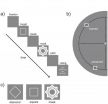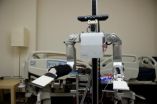(Press-News.org) Increased imports often mean cheaper products for EU consumers and greater opportunities for producers in other countries to export their products, but also increased competition for EU producers.
"I have compared various product groups and found that the effects of a reduction in tariffs would be different for fruit and vegetables and for cereals", says Cecilia Hammarlund, who is behind the report Handel med hinder – effekter av tullar på EU:s jordbruksimport (Trade with obstacles – effects of tariffs on EU agricultural imports).
The study shows that an average reduction in tariffs of one per cent would lead to an increase in trade of some types of vegetables of almost ten per cent. Imports of fruit would increase by five per cent and imports of meat, milk and eggs by almost four per cent. For cereals, however, a one per cent reduction in tariffs would only marginally increase imports.
Imports of agricultural products to the EU are hindered by the tariffs. According to the calculations in the report, the tariffs are particularly high on certain products – 40 per cent on meat and meat products, 48 per cent on dairy products and 37 per cent on cereals. Fruit and vegetables have tariffs of 6 per cent of the import value.
The study (which covers the years 1995 to 2007) also shows that it is costly to trade agricultural products across borders. Transport is one factor, yet obstacles to trade also come in the form of consumer preferences in different countries and differences in laws and regulations.
"One overall outcome is that trade is many times greater between EU countries than across borders between an EU country and another country", says Cecilia Hammarlund, who points out that if the WTO negotiations lead to reductions in tariffs for agricultural products, other types of trade costs could become even more important in the future.
###
The report Handel med hinder – effekter av tullar på EU:s jordbruksimport (Trade with obstacles – effects of tariffs on EU agricultural imports), which includes a summary in English, can be downloaded at http://www.agrifood.se/Files/AgriFood_Rapport_20111.pdf
The AgriFood Economics Centre is a collaboration between Lund University and the Swedish University of Agricultural Sciences.
EU tariffs obstacle to trade with the rest of the world
2011-03-10
ELSE PRESS RELEASES FROM THIS DATE:
Redefining normal blood pressure
2011-03-10
As many as 100 million Americans may currently be misclassified as having abnormal blood pressure, according to Dr. Brent Taylor from the Veterans Affairs Health Care System in Minneapolis and the University of Minnesota and his colleagues. Their findings1 show that these people are not actually more likely to die prematurely than those with 'normal' blood pressure, i.e. below 120/80. Taylor and colleagues' article in the Journal of General Internal Medicine², published by Springer, also shows that in those under 50, diastolic blood pressure* is the more important predictor ...
Learning to see consciously
2011-03-10
Our brains process many more stimuli than we become aware of. Often images enter our brain without being noticed: visual information is being processed, but does not reach consciousness, that is, we do not have an impression of it. Then, what is the difference between conscious and unconscious perception, and can both forms of perception be changed through practice? These questions are important not only for basic research, but also for the treatment of patients with perceptual deficits due to brain lesions e.g. following a stroke. Scientists at the MPI for Brain Research ...
How do people respond to being touched by a robot?
2011-03-10
For people, being touched can initiate many different reactions from comfort to discomfort, from intimacy to aggression. But how might people react if they were touched by a robot? Would they recoil, or would they take it in stride? In an initial study, researchers at the Georgia Institute of Technology found people generally had a positive response toward being touched by a robotic nurse, but that their perception of the robot's intent made a significant difference. The research is being presented today at the Human-Robot Interaction conference in Lausanne, Switzerland.
"What ...
Toward real time observation of electron dynamics in atoms and molecules
2011-03-10
Quebec City, March 9, 2011 – Another step has been taken in matter imaging. By using very short flashes of light produced by a technology developed at the national infrastructure Advanced Laser Light Source (ALLS) located at INRS University, researchers have obtained groundbreaking information on the electronic structure of atoms and molecules by observing for the first time ever electronic correlations using the method of high harmonic generation (HHG). Made by a team of researchers from the Energy, Materials, and Telecommunications Center of INRS and the National Research ...
Combating cucurbit yellow stunting disorder virus
2011-03-10
This release is available in Spanish.
U.S. Department of Agriculture (USDA) scientists are working to give melon growers some relief from cucurbit yellow stunting disorder virus, or CYSDV.
In 2006, Agricultural Research Service (ARS) plant pathologist Bill Wintermantel with the U.S. Agricultural Research Station in Salinas, Calif., and university colleagues identified the plant disease that growers in California's Imperial Valley and nearby Yuma, Ariz., noticed was spreading through their cucurbit fields. Cucurbit crops affected included cantaloupe and honeydew melons.
ARS ...
Synthetic biology: TUM researchers develop novel kind of fluorescent protein
2011-03-10
This release is available in German.
Proteins are the most important functional biomolecules in nature with numerous applications in life science research, biotechnology and medicine. So how can they be modified in the most effective way to attain certain desired properties? In the past, the modifications were usually carried out either chemically or via genetic engineering. The team of Professor Arne Skerra from the TUM Chair of Biological Chemistry has now developed a more elegant combined solution: By extending the otherwise universal genetic code, the scientists are ...
Banana peels get a second life as water purifier
2011-03-10
To the surprisingly inventive uses for banana peels — which include polishing silverware, leather shoes, and the leaves of house plants — scientists have added purification of drinking water contaminated with potentially toxic metals. Their report, which concludes that minced banana peel performs better than an array of other purification materials, appears in ACS's journal Industrial & Engineering Chemistry Research.
Gustavo Castro and colleagues note that mining processes, runoff from farms, and industrial wastes can all put heavy metals, such as lead and copper, into ...
An advance toward blood transfusions that require no typing
2011-03-10
Scientists are reporting an "important step" toward development of a universal blood product that would eliminate the need to "type" blood to match donor and recipient before transfusions. A report on the "immunocamouflage" technique, which hides blood cells from antibodies that could trigger a potentially fatal immune reaction that occurs when blood types do not match, appears in the ACS journal, Biomacromolecules.
Maryam Tabrizian and colleagues note that blood transfusions require a correct match between a donor and the recipient's blood. This can be a tricky proposition ...
New study shows government spending preferences of Americans
2011-03-10
In its 27th survey of American spending priorities since 1973 conducted as part of its General Social Survey (GSS), NORC at the University of Chicago Wednesday released a report on its most recent findings. By a notable margin, education and health care were the top two spending priorities of Americans. And Americans are consistent in that: those two categories have finished in the top two in each of the ten surveys since 1990.
The spending priorities report is derived from recently released data of the 2010 General Social Survey which NORC has conducted for forty years. ...
New molecular robot can be programmed to follow instructions
2011-03-10
Scientists have developed a programmable "molecular robot" — a sub-microscopic molecular machine made of synthetic DNA that moves between track locations separated by 6nm. The robot, a short strand of DNA, follows instructions programmed into a set of fuel molecules determining its destination, for example, to turn left or right at a junction in the track. The report, which represents a step toward futuristic nanomachines and nanofactories, appears in ACS's Nano Letters.
Andrew Turberfield and colleagues point out that other scientists have developed similar DNA-based ...

